When it comes to Plug-in Hybrid Electric Vehicles (PHEVs), each of the three premium manufacturers with CKD operations used to share the same, sound strategy.
With Mercedes-Benz, their strategy is to use PHEVs as ‘flagship’ trim levels. The ‘C350 e’ and ‘E350 e’ are the most expensive and well-equipped variants in their respective classes. This, to us, is a fine strategy. Plug-in Hybrid technology is relatively new and with any new technology, you should market it to a more affluent crowd. They’re more financially prepared to be early adopters as they’ll able to absorb the upfront cost.
These early adopters are also prepared to experiment. You see, Plug-in Hybrid tech may end up changing the industry completely or being a complete dead end. We don’t know yet. These are powertrains that could end up lasting a lot longer than non-hybridised alternatives (because the engine is under less stress throughout its lifespan) or being a lot more expensive to keep in the long-run (because of the price of lithium-ion batteries, but this might come down drastically).
Think about this: you probably change your smartphone every 2-3 years, maybe 5 years at the longest. Most cars are engineered to last at least 5 years with proper maintainance and the less ‘electrified’ a car is, the cheaper it is to keep for longer. Vehicles are made of tens of thousands of parts and go through extreme amounts of heat, vibration and abuse on a daily basis. Electrical components are manufactured at a tiny scale (the typical processor is made on a 14 nanometre node). So when they fail, they’re difficult to diagnose and impossible to repair. Replacements become your only option and the manufacturer usually has the exclusive right to sell replacements.
The point is, no one should treat PHEVs as a sales gimmick if they’re serious about the technology. Parts can get cheaper, but only if the technology becomes accepted and doesn’t scare off those who buy into it too early.
Volvo Cars has also adopted a similar strategy to Mercedes-Benz Malaysia, but puts a CBU twist on it for the petrol variants.
But it’s BMW Malaysia whose PHEV strategy seems a little all over the place thanks to their latest 530e release.
Up until this point, BMW followed the same, sound strategy. The 740Le xDrive and the X5 xDrive40e are currently the only options for the 7-Series and X5. The 3-Series has a entry-level 318i with a petrol powerplant and the 330e with the electrified powertrain. As we dicussed in an earlier post, this variant probably won’t age quite as well as the 320i, 320d or 328i that BMW Malaysia used to offer. But anyway, the strategy for the 3-Series was sound. Base model with a small powerplant, you want more, you pay more for the PHEV version.
But just last week, BMW Malaysia launched the 530e as the BASE model 5-Series. They removed the sunroof, the adaptive LED headlights, display key, and gesture control for a stripped down executive sedan. It’s a lot cheaper than the 530i, but it’s not exactly cheap, at RM343,800. We’re sure it’s a great car (judging from our experience with the 740LE xDrive), but it’s a little strange what they’re doing with their strategy.
This is the first time we’re seeing a PHEV being marketed as a cheaper alternative to a higher-spec petrol model (considering both cars are locally-assembled). Whether or not this strategy pays off or back fires will probably only be felt in 5 or 6 years. In the mean time, the BMW Malaysia facebook page is seeing the wrath of their fans.
We’ve also heard that owners of the previous 5-Series, the F10, aren’t happy either. By pricing this new car at RM344K, a full-spec F10’s own resale value gets pushed down. Think of the ActiveHybrid F10 5-Series. Back in 2014 it cost owners half a million ringgit, but it came with a 3-litre inline 6, a sunroof, and just about every piece of kit that could be put in. It’s the better-specced car, but impossible to sell for a decent price today.
Again, we’re sure the 530e is a great product, and BMW’s pricing does reflect the car’s lower engine output and spec. We just feel that it’s a strategy that has us and some fans scratching our heads.

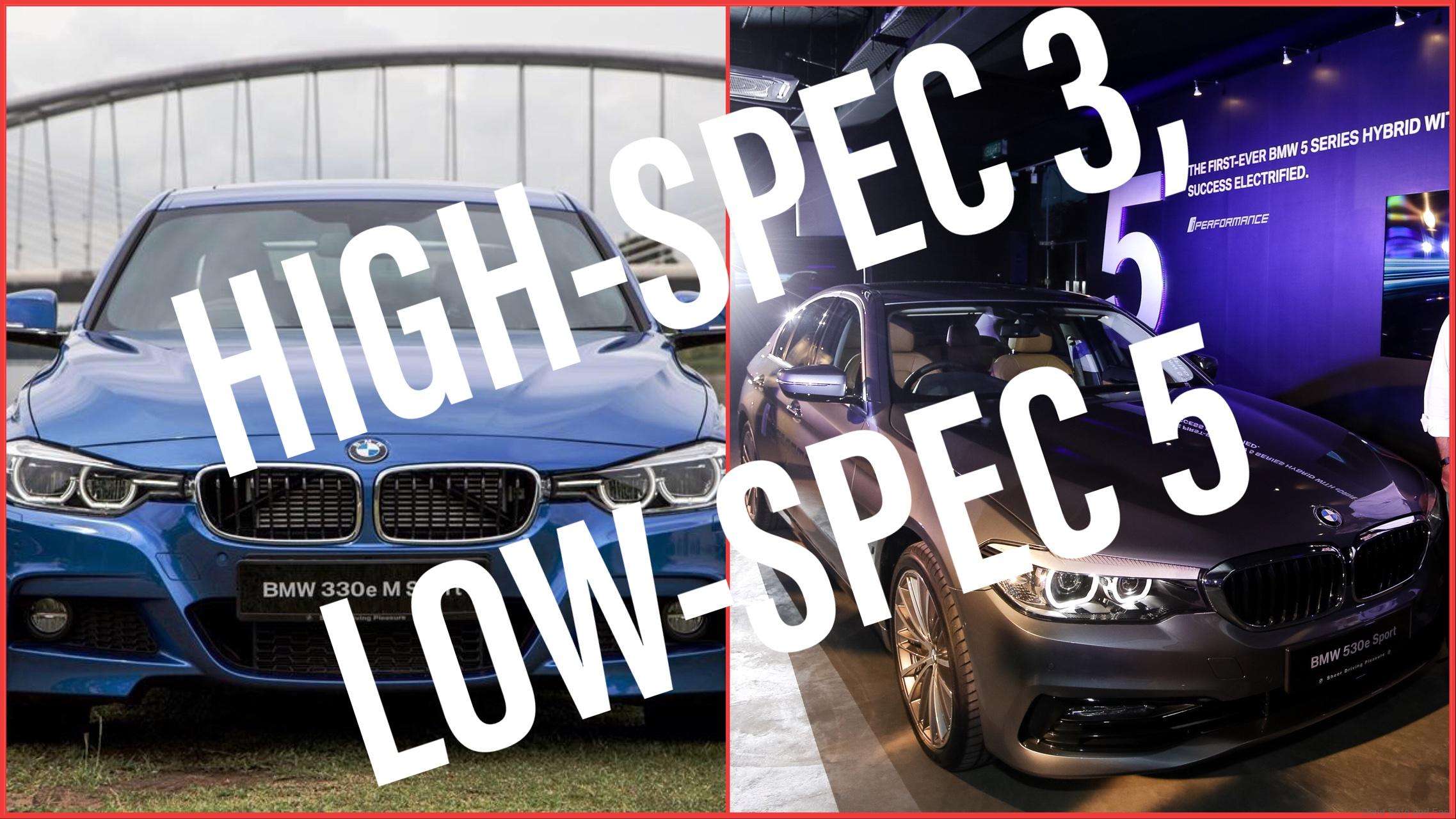
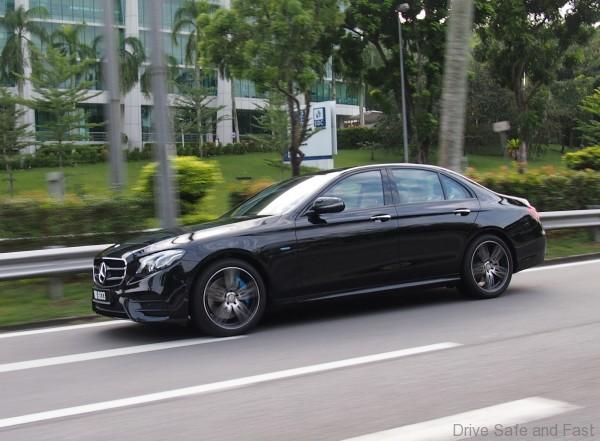
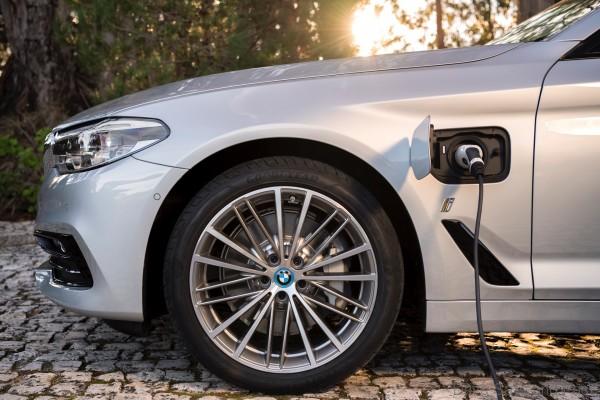
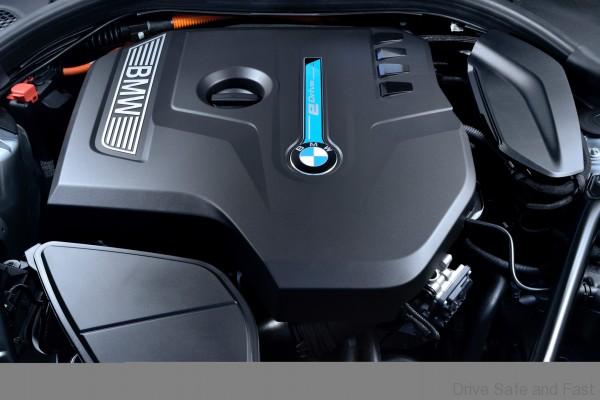


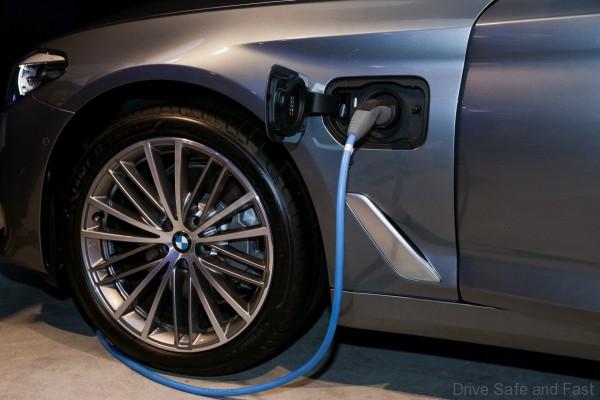
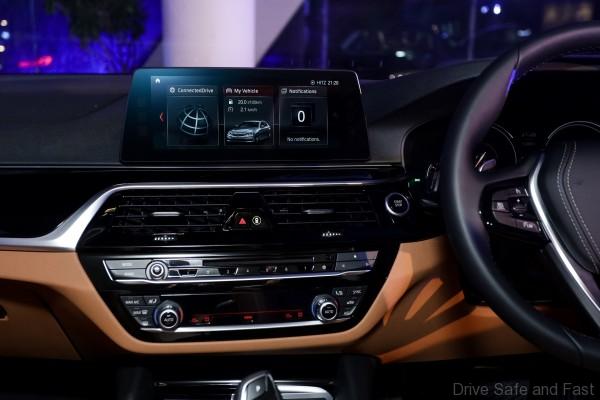
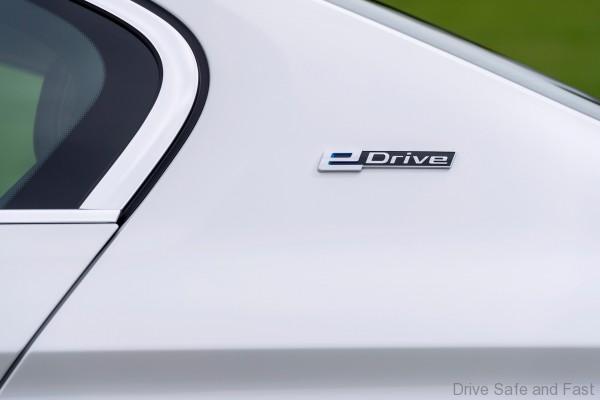

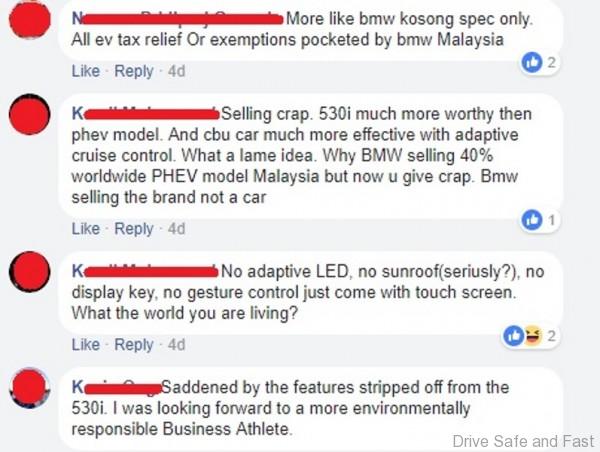
Basically an x5 40e is around 10% more only
This is massive profiteering for the 530e
We’ve to live with the fact that premium car prices in Malaysia are adjusting down. Consumers in this segment had been paying exhorbitant prices for far too long. Govt’s EEV incentives should quietly benefit the long suffering consumers in this band.
So, BMW is most aggressive in its pricing of PHEV cars and it should theoretically, gain long terms benefits of cheaper parts and repair costs arising from bigger number of BMW cars on the road. Other brands should just follow suit.
Take the Range Rover Sport 3.0, it retails in excess of RM800,000 locally; compare that to BMW’s X5 40e which retails at RM388,000. Even if you allow for additional costs for battery replacements in 5 years –
pricing of CBU cars are just unreal.
More so that battery prices, like handphones’ batteries, will get cheaper over time with higher volumes in use in the market over time.
I would not buy a PHEV for now. I checked with BMW and Mercedes and both said the hybrid battery will cost from RM50,000 to RM80,000 and both cannot even guaranteed any price for now. I calculated the savings from the petrol and in 5 years, you probably saved only around RM25,000. The sales people cannot confirmed if the car can reach Spore without further charging along the way or any charging stations available in Spore’s hotels.
My other concern is the advance of hybrid battery. In 5 years’ time, the technology would have advanced so much and you may not be able to buy the same battery again and may have to change the cables and connectors. A friend of mine was unlucky with his A6 hybrid as the warranty was only for 3 years and it costed him RM50,000 to change the battery and RM80,000 to change the defective cables!
@Kh Lim I heard from the radio, the Toyota hybrids cost rm4000-5500 including installation. I guess for BMW maybe rm20k-30k max?
TQ for your question. You heard it on BFM? That would have been me sharing the information on my Saturday show from 12 noon. For the European brands, they have yet to share their replacement battery costs with us.